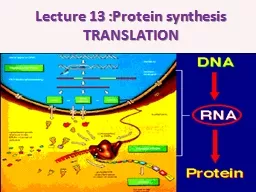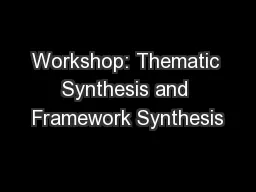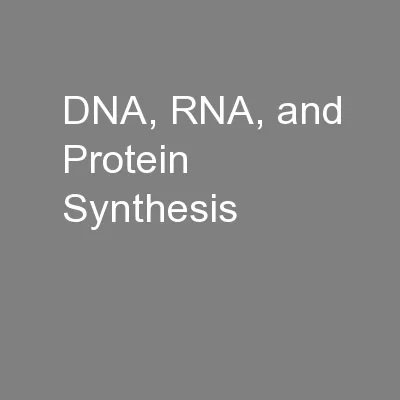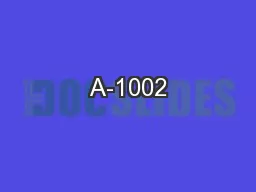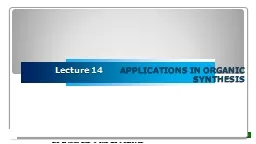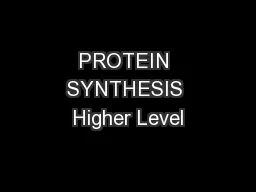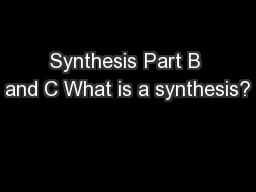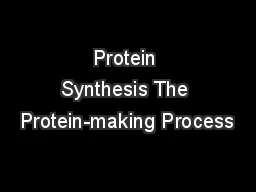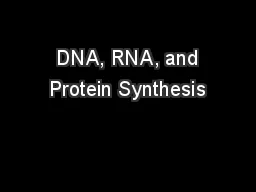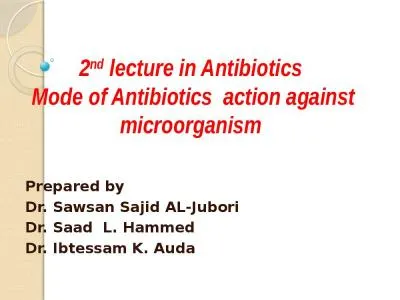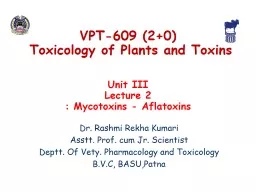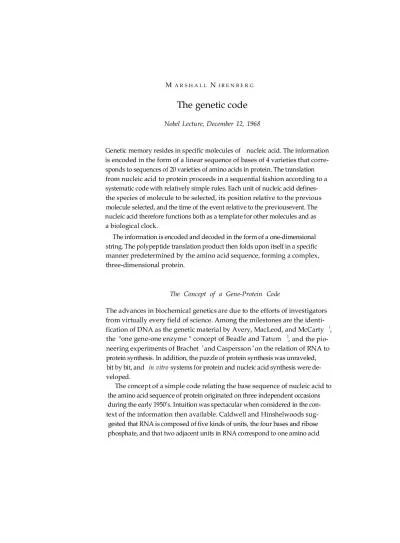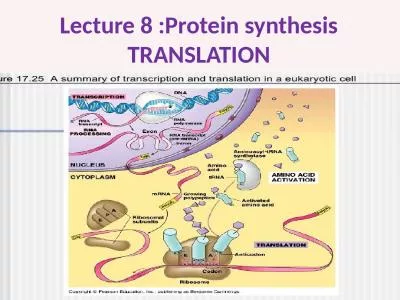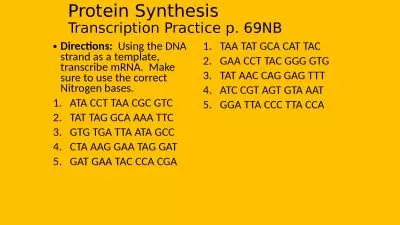PPT-Lecture 13 :Protein synthesis
Author : alida-meadow | Published Date : 2017-10-25
TRANSLATION Proteins involve in many body structures According to central dogma the genetic information flow from DNA the RNA via transcription process then it
Presentation Embed Code
Download Presentation
Download Presentation The PPT/PDF document "Lecture 13 :Protein synthesis" is the property of its rightful owner. Permission is granted to download and print the materials on this website for personal, non-commercial use only, and to display it on your personal computer provided you do not modify the materials and that you retain all copyright notices contained in the materials. By downloading content from our website, you accept the terms of this agreement.
Lecture 13 :Protein synthesis: Transcript
TRANSLATION Proteins involve in many body structures According to central dogma the genetic information flow from DNA the RNA via transcription process then it will translate later to functional protein . . Parts 1-4 – Data Extraction, Quality Assessment, Synthesising Across Studies, . Completing the Analysis. Shared Topic: . Adherence to Antiretroviral therapy (ART) for HIV in . Zambia. BACKGROUND: . . Parts 1-4 – Data Extraction, Quality Assessment, Synthesising Across Studies, . Completing the Analysis. Workshop: . Framework Synthesis, Meta-Ethnography and Realist Synthesis . Shared Topic: . Chapters 16 and 17. Before the end of the semester we will be covering…. Historical DNA experiments. Structure of DNA/RNA. DNA Replication. Protein Synthesis (Transcription and Translation). Mutations. WM-002. MH-001. What is muscle health?. Muscle protein synthesis. Muscle free pool. Muscle Proteins. Breakdown. Synthesis. Plasma free pool. Burd. . et al. . . , . Exerc. Sport . Sci. Rev, . 2013. Copyright ©The McGraw-Hill Companies, Inc. Permission required for reproduction or display.. I. . Enantioselective. functional group . interconversions. ORGANOMET CHEM IN ORGANIC SYNTHESIS. II. Carbon-carbon bond formation via . Learning Outcomes. At the end of this . topic . you should be able to . . Outline the steps in protein synthesis. Know that . DNA contains the code for protein. Know . that enzymes unwind the DNA. Know . Discuss with your group.. Be prepared to share your answers. . The Hardest Part. The synthesis section is the hardest part of the exam. It is worth . 47. % . of the entire exam!. 17 % -- multiple choice. Protein Synthesis (Gene Expression) Notes. Proteins . (Review). Proteins make up all . living. materials. Proteins are composed of . amino acids. – there are . 20. . different amino acids. Different . Chapters 16 and 17. Before the end of the semester we will be covering…. Historical DNA experiments. Structure of DNA/RNA. DNA Replication. Protein Synthesis (Transcription and Translation). Mutations. Mode of Antibiotics action against microorganism . Prepared by . Dr. . Sawsan. . Sajid. AL-. Jubori. Dr. . Saad. L. Hammed . Dr. . Ibtessam. K. . Auda. . Mechanisms of antibacterial action. There are five main mechanisms by which antibacterial agents act.. Dr.. Rashmi . Rekha. Kumari. Asstt. . . Prof.. cum Jr. Scientist. Deptt. . Of . Vety. . Pharmacology and Toxicology. B.V.C, . BASU,Patna. VPT-609 (. 2+0. ). Toxicology of Plants and Toxins. DEFINITION. THE GENETIC CODE373in protein Dounce6 proposed that three adjacent bases in RNA correspondto one amino acid in protein. In addition, the concepts of polarity of transla-tion and activation of amino ac TRANSLATION . Initiation, Elongation, and Termination of Protein Synthesis in Eukaryotes. Initiation:. Initiation . of protein synthesis differs significantly between prokaryotes and eukaryotes. Eukaryotic mRNA has no ribosome-binding site (RBS). Instead recognition and binding to the ribosome . 69NB. Directions:. Using the DNA strand as a template, transcribe mRNA. Make sure to use the correct Nitrogen bases.. ATA CCT TAA CGC GTC. TAT TAG GCA AAA TTC. GTG TGA TTA ATA GCC. CTA AAG GAA TAG GAT.
Download Document
Here is the link to download the presentation.
"Lecture 13 :Protein synthesis"The content belongs to its owner. You may download and print it for personal use, without modification, and keep all copyright notices. By downloading, you agree to these terms.
Related Documents

